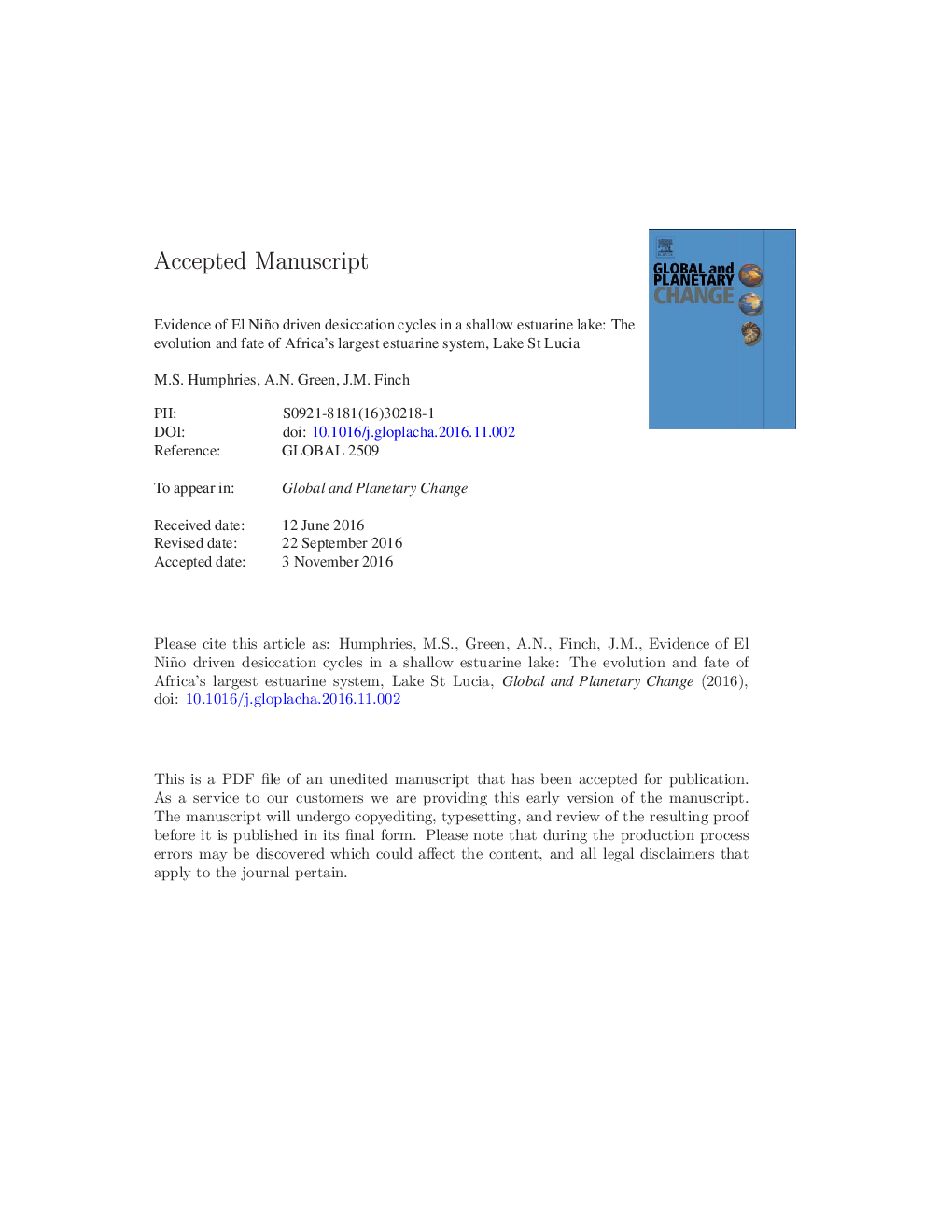| Article ID | Journal | Published Year | Pages | File Type |
|---|---|---|---|---|
| 5755408 | Global and Planetary Change | 2016 | 31 Pages |
Abstract
Projections of an increase in drought frequency and intensity over the next century are expected to have severe implications for a number of globally important coastal ecosystems. In this paper, we present geochemical data from three sediment cores extracted from the main depositional basins of Lake St Lucia, Africa's largest estuarine system. Lake St Lucia is subject to extreme natural variations in salinity. The sedimentary record documents the evolution of the system from a relatively deep-water, open lagoon to a confined, shallow estuarine lake that today is highly sensitive to changes in freshwater supply. This is particularly evident in the northern portions of the system, where the presence of distinct halite-enriched horizons document episodes of prolonged drought. The lateral persistence of these halite layers, as revealed by seismic profiling, point to a system-wide onset of desiccation associated with a major shift in the regional hydroclimate. The most severe drought events identified, which may have lasted several years, occur at ~ 1100 and 1750 cal year BP, and are associated with known peaks in El Niño frequency and intensity. Our analyses suggest that past cycles of desiccation and hyper-salinity have been controlled by climatic changes related to ENSO intensification. This study provides a valuable new record from a key ENSO-sensitive region of the Southern Hemisphere. Our findings have important relevance for understanding ENSO variability across the Indo-Pacific region and the influence exerted on systems sensitive to changes in moisture balance.
Related Topics
Physical Sciences and Engineering
Earth and Planetary Sciences
Earth-Surface Processes
Authors
M.S. Humphries, A.N. Green, J.M. Finch,
